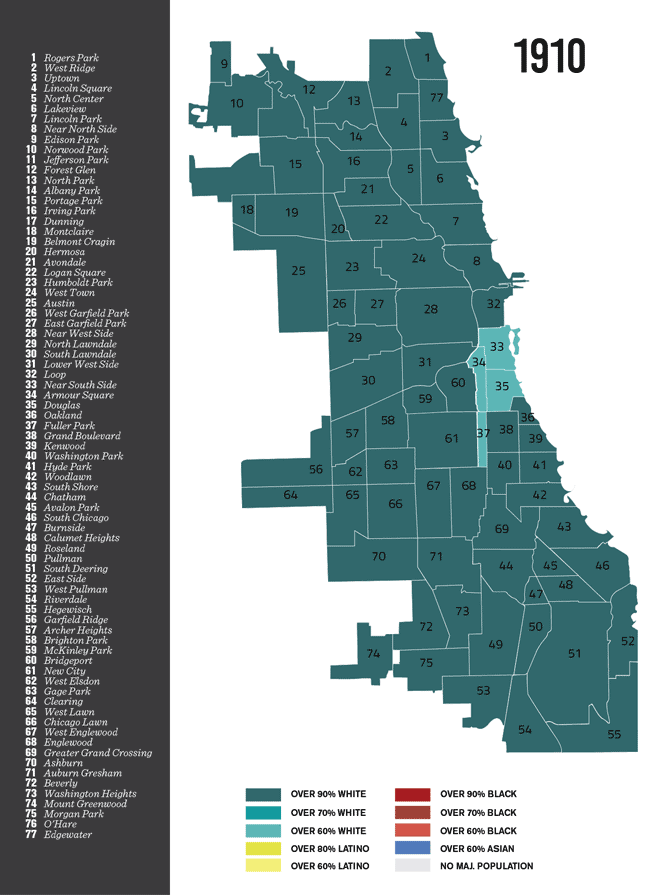The Great Migration – the six-decade movement that saw more than six million African Americans migrate from their homes in the South to states in the North or West – was one of the 20th century’s most significant events, and few areas were more transformed by the migration than Chicagoland.
The numbers speak for themselves: at the conclusion of World War I, African Americans comprised just under 3 percent of Chicago’s population, totaling 44,103 of the city’s 2.7 million residents; by the turn of the 21st century, that population had swelled to more than one million, comprising a third of the city’s population – in fact, more African Americans lived in Chicago than the entire state of Mississippi.
And though the Great Migration contributed richly to Chicago’s unique culture – Louis Armstrong, Sam Cooke, Richard Wright, Muddy Waters, Gwendolyn Brooks, Nat King Cole and John H. Johnson were all products of the migration – the city’s burgeoning black population encountered vast systems of housing discrimination, which ranged from restricted racial covenants, to redlining, to predatory lending practices; today, Chicago is the third-most segregated city in America (we detail those systems extensively in our cover story).
Below, we have charted that century of demographic change in the Second City with a custom image, utilizing maps from the University of Illinois at Chicago’s “Chicago Area Geographic Information Study.” In addition to the maps, here are some facts to keep in mind for each time period:
•In 1910, all but four of Chicago’s neighborhoods – the Near South Side, Armour Square, Douglas and Fuller Park – were more than 90 percent white.
•By 1940, the Douglas, Grand Boulevard and Washington Park neighborhoods had changed considerably – all three were more than 90 percent black – but housing segregation policies effectively limited the city’s black population to those neighborhoods, and the vast majority of the city’s areas remained overwhelmingly white.
•By 1960, 14 of Chicago’s neighborhoods (including two on the West Side) were majority black, including North Lawndale, which, thanks to blockbusting and white flight, had become more than 90-percent black.
•By 1980, the city’s South and West Sides had changed considerably, with the furthest neighborhoods in each area being majority black. In the South Side, 22 neighborhoods were at least 70-percent black, while 17 were 90-percent black. Also note that the Lower West Side and South Lawndale neighborhoods were, by 1980, majority Latino.
•Finally, at the turn of the millennium, nearly every neighborhood in the city’s South and West Sides were no longer majority white. Only six South Side neighborhoods – West Elsdon, Clearing, West Lawn, Hegewisch, Beverly and Mount Greenwood – had white populations of 60 percent or greater, while 25 were more than 60 percent black. Also note that the North Side, which had remained fairly homogenous up to 1980, is now considerably more diverse. The Belmont Cragin, Hermosa, Avondale and Logan Square neighborhoods were majority Latino, while Rogers Park, West Ridge, Edgewater and Albany Park had no majority demographic.
